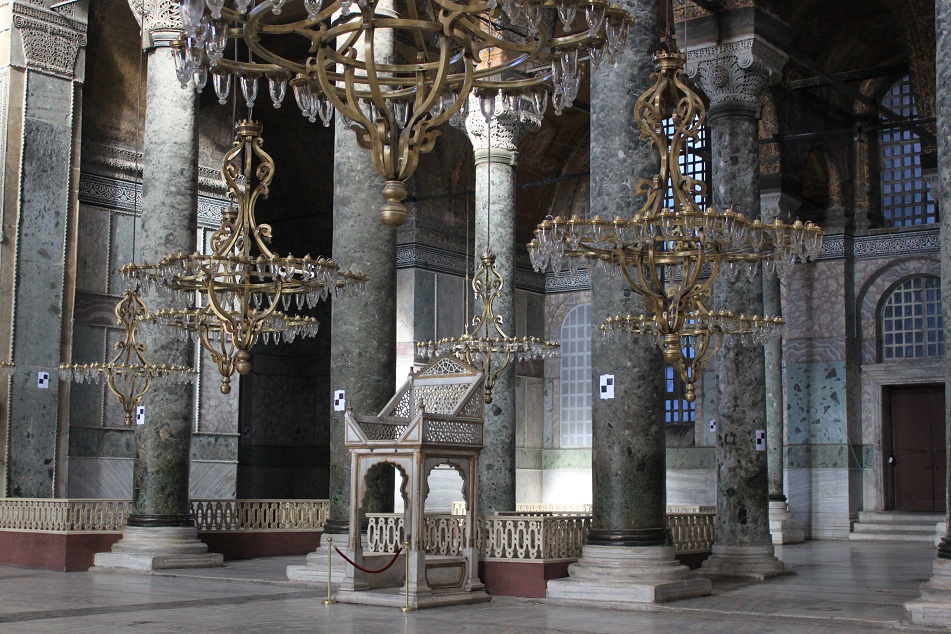From the outside it is a structure of plain layers of bricks protruding from the exposed weathered pink wall, supporting a massive dome flanked by four minarets varying in size and color. A dull outer narthex with a more elegant marble-walled inner narthex separate the nave from the gates, conducting ancient congregations to the main praying hall. The minimalist outdoor appearance of this building deceptively hides the lavish embellishments inside.
Rows of tall columns with ornate capitals, fine Byzantine mosaics, marble urns, and an intricate Ottoman minbar are only a few elements which elevate the splendor of the once largest cathedral in the world. On top of everything, a colossal dome covers the entire nave, almost seemingly floating from the ground.
Hagia Sophia which was built in the 6th century under the command of Emperor Justinian I was the center of Christianity throughout most of its history. It held the title as the world’s largest cathedral for more than a millennium until the completion of the cathedral in Seville. Coincidentally the former was later turned into a mosque after the Ottomans conquered Constantinople, while the latter was once a mosque when Seville was still a part of the Moorish region in Iberia.
The beautiful mosaic of the Virgin and Child is flanked by two giant calligraphy of Allah and Muhammad at the apse of what is now a museum and UNESCO World Heritage Site. They are vivid reminders of how fierce the rivalry between the world’s two biggest religions to conquer regions in the old world was. Religious-driven clashes have long shaped the history of humanity. Despite bearing divine purposes, religious battles often brought up the worst of what a human could possibly be. Greed, pride, and other horrific attributes often came out from such events, and still do in modern time. However they also drove human’s creations and innovations to unimaginable limits, resulting in great architectural marvels such as Hagia Sophia, among other wonders and achievements.




As turning the mighty Saint Sophia into a mosque was not enough for Sultan Ahmed I, he commissioned the construction of a new mosque right in the face of the former cathedral. In the early 17th century Sultan Ahmed Mosque was built to rival the sheer size of Hagia Sophia. Adorned with six slender minarets, nine domes in various sizes, and more than 20,000 blue tiles with tulip patterns – hence the name Blue Mosque – it is one of the greatest mosques in Ottoman’s history.
Looking up to the sublime decoration under the domes of the Blue Mosque, two giant owl eyes stare upon me, reminding me of the great knowledge and wisdom which were essential in designing and building this grand architectural marvel. The Blue Mosque with its imaginary owl eyes which symbolize wisdom and Hagia Sophia which was named after the wisdom itself owe their creations to the long history of conquests of the great city of Constantinople, a series of events which ironically occurred often in the absence of wisdom.
As I walk out of the mosque, I can clearly see the great dome and four minarets of Hagia Sophia. Probably Sultan Ahmed himself grinned when he saw the former cathedral from the newly built mosque – a notion of his victory. Centuries later there is no more sultan in the country and the old cathedral is now a museum. The two great monuments still stand strong, but devoid of the intense rivalry that filled the air during the time of conquests.


